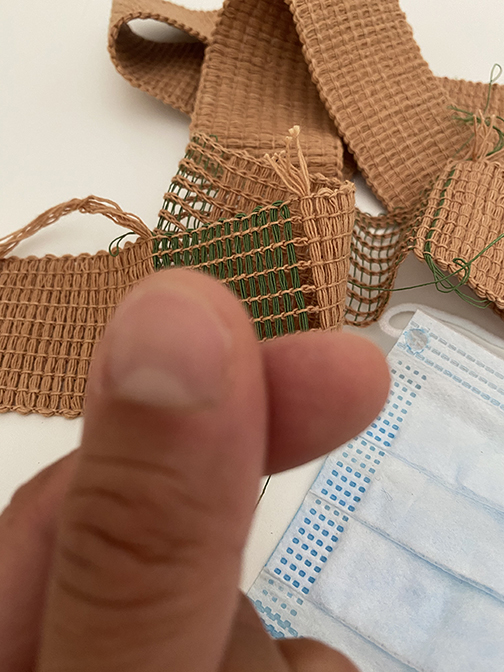Despina Papadopoulos
Gestures in the time of COVID-19 and the High-Risk Other
In The Painter of Modern Life, the poet Charles Baudelaire observes that “every age has its own gait, glance and gesture.”[1] In a period of just four months, from April to June 2020, we have been called to suspend, revisit and upend gestures that are intrinsically tied to our expression of affection, affiliation, affirmation; gestures that constitute our affective relationship to ourselves, others and the space around us: concentric circles that are now becoming literal bubbles in the Venn diagram of the encounter (that of proxemics in a different domain or discipline).
The High-Risk Other
Still, we have already witnessed that as soon as lockdowns are easing around the world, COVID cases spike and reflexive bodily extent-ions of kissing, hugging and hand-shaking are resumed– hardwired as they are, it is hard to internalise, or more aptly, externalise, that these are now high-risk activities and that new behavioural modalities need to be developed in response.
At the same time, calls for social distancing or immunity passports, echo the tropes of the fear of the other, with all the ideological and political ramifications such language, and its normalisation, carries. The emerging narrative and proposals for containment of the spread of COVID-19 are centred yet again on a centralised, instrumentalised and a-social deployment of technology. In such deployments the body becomes but the carrier of a beacon that measures distance and proximity [Arista Flow, Estimote, Safe Spacer] and social relationships are turned into vectors divorced from their embodied and social performativity and are instead reduced to a potential carrier of risk to be logged on a technological wearable appendage so it can trace back the origin of contagion.
Wearables & Social Functionality
Here, wearable technologies for contact tracing, immunity passports, or even a wearable thermometer, are concerned with the retrieval and display of data in a distinctly technocentric manner that is oblivious to the psycho-social ecologies that produce these data. This technocentric myopia, characteristic of many of the wearable devices in the market that treat human activities as essentially quantifiable and decipherable, is not only reductivistic but also contributes to a dystopic alienation of human encounters. At the same time, such approaches miss the opportunity to not just monitor human proximities, but instead to propose and encourage new types of social becomings. In the past few months it has become painfully clear that what we need is social cohesion and communion, not social distance and enclosure.
In this framework there is a space rife with opportunity for developing wearables that promote behaviours that mitigate the risks associated with COVID, such as proximity in crowds, touching of the face, hugging and shaking hands, while at the same time explore new communication protocols and ways to express cordiality, fondness and acknowledgment of shared experience in communal spaces. The development of wearables that supplement their utilitarian function with what I have been calling social functionality, is in fact in line with the experience and lineage of garments in general, where their role as signifier transcends their utility and material(ity).
In fact, I argue that one of the reasons that wearables have not taken hold, despite their 20+ years presence in both corporate and experimental environments, is that they consistently disregard the social life of garments and their expressive potential or indeed the need for human connectivity in an age of accelerated technological disembodiment.
While technology has greatly contributed to a sense of disembodiment and social alienation, at a time when such alienation is extended in the public, physical space, it becomes particularly critical to reposition technological devices as essentially embodied and social. Wearables at the time of COVID- 19 can indeed take on this role and experiment with technology as the junction of innovation, expressivity and of a social and embodied awareness that eschews risk without instrumentalising the body and its milieu.
The Making of Making
I believe that experimenting with the social functionality of wearables and their role as agents of behavioural change that is not limited to the tracking and display of data which lacks meaningful reinforcing feedback loops, must be rooted in three interconnected practices:
- The development of inhabited, fully functioning prototypes that can be experienced in an untethered – both literally and metaphorically – manner
- An interdisciplinary approach that traverses all phases of development and entangles theory with practice
- Engaging with materials and making practices as a weave of natural materials and artisanal production techniques and engineered high-performance materials and novel manufacturing methods
[1] Charles Baudelaire and Jonathan Mayne, The Painter of Modern Life and Other Essays, 2nd ed, Art & Letters (London: Phaidon, 1995), 14.
